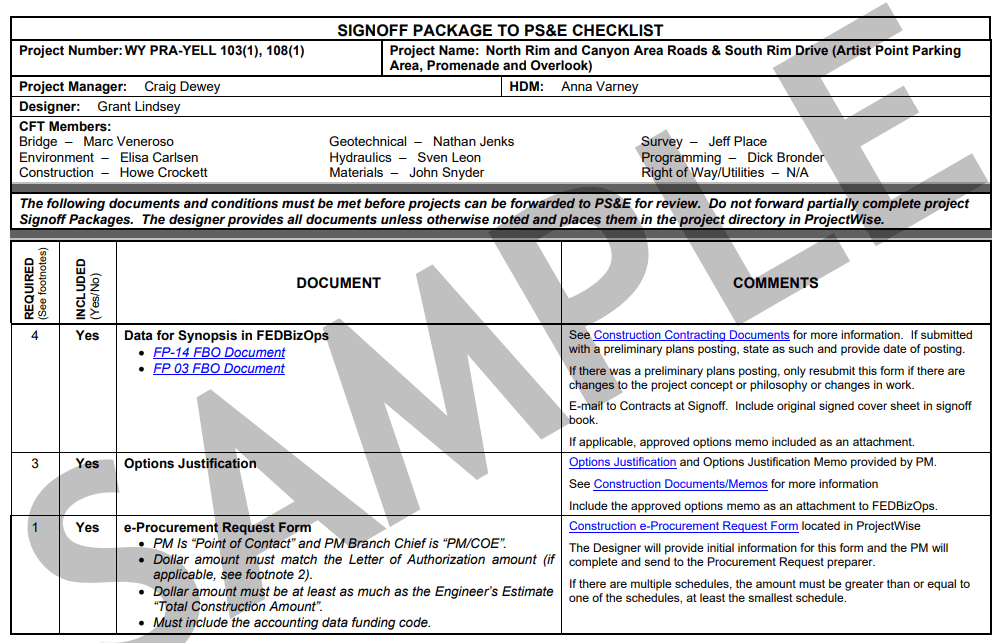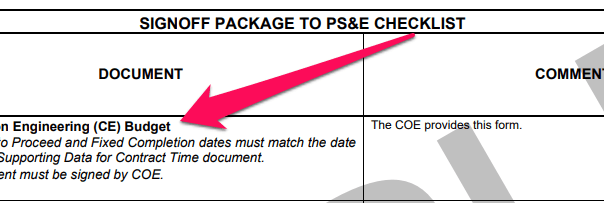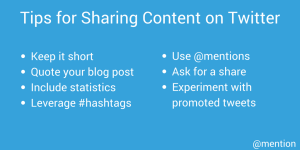— July 23, 2019
A project sign-off sheet is essential to formally close a project or acknowledge delivery of a key deliverable. Learn how to use them in your projects in this guide.
After countless hours, dozens of resources, and hundreds of requests, you’ve finally wrapped up the project.
Time to pop the bubbly and celebrate, right?
Not quite.
Before you start the wrap-up party (and the debrief), you still need to formally close the project. There are contractual obligations and liabilities. Unless you get sign-off from all stakeholders, you can’t really say that the project is really over.
That’s where the project sign-off sheet comes into the picture.
This simple document formally signals the end of the project. Stakeholders use it to tell all involved parties that they’re satisfied with the project (and if they’re not, to formally register their complaint).
A sign-off sheet is an essential part of any project. We’ll discuss what it is, when to use it, and how to make the most of it before you dive into debriefing. We’ll also share a free template you can use right away in your own projects.

What is a Project Sign-Off Sheet?
Easy: a sign-off sheet is a document signed by all stakeholders. It states:
- The project’s intended goals and whether they were met or not
- The project’s key deliverables and whether they were actually delivered
- Comments and observations, if any
- The project start and end dates
The document is then signed by all involved parties. Their signatures formally (and more importantly, legally) close the project.
Whatever reservations stakeholders might have can be registered here, but by signing it, they agree that the project team’s liabilities are officially over.
You will have countless variations based on your organization’s specific legal needs and contractual obligations.
A complex project will have a sign-off sheet running into dozens, even hundreds of pages. Government contracts, for instance, usually have “sign-off books”, not just sheets.

Regardless of the scope or scale of the sign-off sheet, the core concept remains the same: sign the sheet and the project can be officially closed.
What is a Deliverable Sign-Off Sheet?
A project sign-off sheet is typically used for completed projects, but what if you’re breaking the project down into multiple deliverables?
This is a common practice in large projects that can be divided into distinct stages. Each stage might end with a deliverable.
In such cases, it’s common to have a deliverable sign-off sheet. This is exactly like the project sheet, except it focuses on one or more deliverables.
That is, by signing this sheet, all involved parties indicate their satisfaction with the deliverable(s). Their signatures can be seen as a green signal to move ahead with the remaining deliverables.
Once all the deliverables that make up the project have been completed, the stakeholders can sign the project sign-off sheet to formally close the project.
It’s a better practice to send deliverable sign-off sheets as you wrap up major deliverables. Three reasons why:
- Sending deliverable sign-off sheets keeps clients in the loop as to the status of the project
- Signing off on each deliverable ensures that clients don’t request major revisions at the end and stretch the project’s scope.
- In long projects, stakeholders might change over time as people exit the company or change roles. Periodic deliverable sign-off ensures that there is constant verification of delivery.
Think of this as a way to build trust and create accountability. If all deliverables have been signed-off by their deadlines, clients will have a much easier time trusting your capabilities.
When is a Sign-Off Sheet Used?
Project sign-off is one of the many activities you’ll do at the end of a project. This is the phase where you’ve handed over all deliverables and are about to dismiss the project team.
The typical steps in this phase include:
- Project sign-off and completion of all other legal formalities.
- Gather feedback from clients, internal stakeholders, and project team (this is a good time to collect NPS scores as well).
- Project post-mortem and debriefing (read our guide to creative project debriefing here.)
- Release resources
- Celebrate
The final step, is, of course, essential.
Jokes aside, all the steps outlined above are important, but project sign-off is the only one that’s legally necessary. It’s good to conduct a post-mortem or collect feedback, but you’re not going to be held liable for anything if you don’t do it.
Not signing the project sign-off sheet, however, can open up a pandora’s box of issues in the future. What if the mobile app you delivered crashes after an iOS update 6 months later? If the project was never formally closed, couldn’t you be held liable to fix the issue?
This is why getting sign-off should be the first step as you wind down the project. You should be able to point to this document in case a dispute arises in the future.
Do keep in mind that a signature on a sign-off sheet isn’t legally watertight. You might still be held liable for issues, based on your original contract. Always consult a lawyer before developing your contracts and documentation.
Who Should Sign the Sign-Off Sheet?
The short answer is “all involved parties”, but that’s not particularly helpful.
The longer answer is:
- Stakeholders – both internal and external
- Sponsors or project owners
- Anyone else interested in the project’s outcome or quality (such as a key internal executive)
While getting sign-off from internal stakeholders is optional (at least in the legal sense of the word), getting the all-clear from stakeholders and sponsors is vital.
In particular, you need to get sign-off from sponsors in order to release any remaining payment. The sign-off also means that you can release your resources and, if the initiating agreement includes it, hand over any unused materials/resources back to the sponsor.
Apart from the project sponsors, you’ll also need the okay from all stakeholders on the client’s side. Some stakeholders might have zero reservations. Others, however, might register their reservations.
Which brings us to one of the most important parts of any project sign-off sheet.
Sign-off Sheets Offer a Way to Register Complaints
Imagine that you’re a civil engineer working on a project to build a bridge. Throughout the project’s life cycle, you’ve seen lapses in quality control. You’ve tried to rein things in, but the budget and deadline demands meant that all issues were never 100% resolved.
As the project draws to a close, how do you officially register your reservations?
You guessed it: through the project sign-off sheet.
Every sign-off sheet has a section to add “comments”. While this is strictly optional, stakeholders often use this section to formally express their reservations.
Of course, the sign-off stage isn’t the time to resolve issues – that should have been tackled months ago. But it does give stakeholders a platform to document their complaints.
Not only is this useful for record keeping, but it can also protect stakeholders in case of any future problems. If the bridge collapses, investigators will have the engineer’s sign-off complaints as a record of risks associated with the project.
Do keep in mind that the sign-off is no place to register issues for the first time. Rather, it’s a place to document ongoing, unresolved problems. If a stakeholder brings up an issue for the first time in the sign-off, it indicates poor communication. You can certainly contest this complaint if you feel it’s unfair and should have been brought up earlier.
How to Create the Project Sign-Off Sheet
As a document, the project sign-off sheet isn’t particularly complicated. It has a few fields and doesn’t need a lot of data.
We’ll share templates that you can use right away in your own projects. But if you want to build your own, or understand how sign-off sheets work, read on.
The Elements of a Project Sign-Off Sheet
Although there are plenty of variations, most sign-off sheets have the following elements at least:
- Project identification: Include details about the project including the following required fields: Project name, Project sponsor, Project manager, the document creation date.
- Duration details: Include the project’s start and end dates as well as the total duration based on these dates.
- Project goals: Briefly list the key goals of the project. Also, note whether these goals were met or not (a yes/no answer is sufficient – use the debrief for a detailed post-mortem).
- Project deliverables: List the key deliverables of the project and whether they were delivered. You can also include the number of the deliverable (“3rd of 8 deliverables”), the delivery date, and the name of the person who approved it.
- Comments: Any comments related to the project, filled by the stakeholder. These can be reservations, deliverable-focused comments, or even praise for the project manager and her team.
- Signature and date: Finally, include room for the stakeholder to sign the sheet. This should include the stakeholder’s name, designation, signature, date, and an acknowledgment that by signing, they agree that the project has been finished satisfactorily.
That’s the basic structure, but it’s not the only way to do things.
One common variation, especially for larger projects, is to list each major deliverable and comments associated with it separately. This sample sign-off sheet from the US Department of Transportation, for instance, lists delivered documents along with stakeholder comments for them:

What about deliverable sign-off sheets?
In such cases, include the project identifiers as you normally would (project name, manager, ID, etc.). But after that, include the following:
- Deliverable name
- Deliverable number (out of total deliverables), such as “Deliverable #2 of 4”
- Delivery date
Deliverables are often approved by representatives on behalf of the sponsor, so it’s a good idea to include an “Approving Representative” field as well.
3 Tips for Using Project Sign-Off Sheets
Before we leave, there are a few tips you should follow when creating sign-off sheets:
1. Bring up issues early
A client bringing up an important issue in the sign-off stage indicates poor communication leading up to project delivery. Of course, sometimes the blame lies on stakeholders themselves for not raising issues, but if you’ve been communicating regularly, you’ll very rarely have this problem.
Avoid this problem by creating a better communication plan. In particular, address key issues early and often. Reservations, if any, should be resolved by the sign-off stage. At the very least, they shouldn’t surprise you.
2. Make sure that stakeholders understand the deliverable/project requirements
Imagine this scenario: Stakeholder A signs off on the requirements documents at the start of the project. Midway through, she departs the company and Stakeholder B comes in her place. Stakeholder B is incredibly busy and doesn’t manage to read the requirements carefully enough.
Consequently, come sign-off time, this new stakeholder doesn’t fully understand what’s to be done and expresses her reservations.
This is a common situation when you’re dealing with long projects and large companies. Stakeholders come and go and not all of them have the same understanding of the requirements for each deliverable or the project as a whole. When it comes time to sign-off, they’re not sure what to really expect.
Avoid this problem by making sure stakeholders understand the requirements. If someone new comes in, brief them on the requirements, and, if possible, get them to sign-off again. This will make sure that they’re not surprised at delivery time.
3. Follow-up regularly
Delays in signing-off on deliverables are common across projects and stakeholders. This creates unnecessary delays as project teams are left waiting for the go-ahead before moving onto other deliverables.
Avoid this issue by adopting an aggressive follow-up schedule. Stay in regular touch with stakeholders and, if necessary, escalate the issue to a higher authority. Since sponsors are often heavily invested in the project’s success, talking to them about delays is also a good idea – but only the delay is particularly damaging.
Over to You
Project sign-off sheets are an important part of the project closing process. By getting formal sign-off, you create a sense of accountability, improve trust, and protect yourself from liabilities. A stakeholder signature on this sheet can be seen is the green signal to disband the project team and reallocate your resources.
Use the templates we’ve shared below to use project sign-off sheets in your projects.
For more such templates, try using Workamajig to manage your agency process. Click this link to get a free demo of Workamajig.
Business & Finance Articles on Business 2 Community
(250)
Report Post







